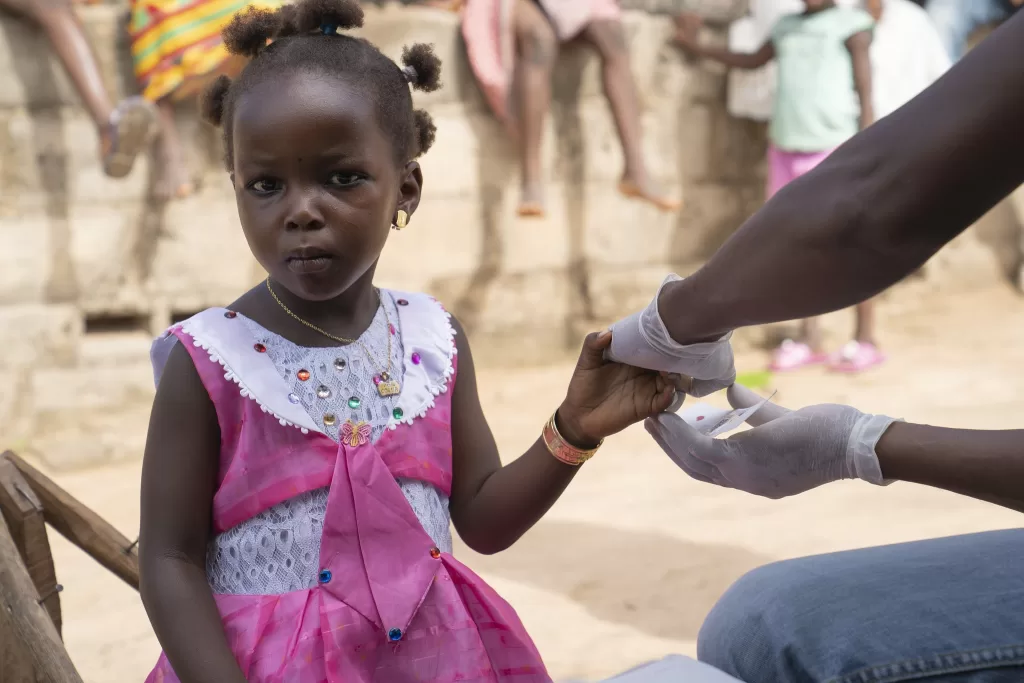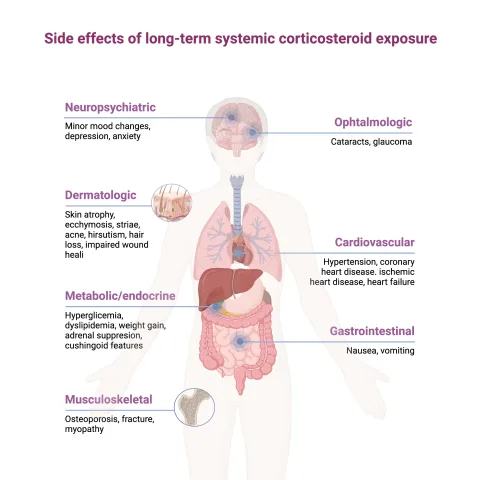Drug-resistant malaria poses a significant threat to global health, particularly in Africa, where recent findings reveal that mutations in the Plasmodium falciparum parasite are leading to partial resistance against artemisinin treatments. This alarming trend is highlighted in a new study that emphasizes the potential spread of malaria resistance, particularly relating to key mutations in the K13 gene, which are critical for understanding and preventing treatment failure. As artemisinin combination therapies (ACTs) rely on the efficacy of their lead component, any decline in effectiveness could result in dire consequences for malaria control efforts in the region. The emergence of K13 mutations, which have already been detected in Tanzania and Zanzibar, underscores the need for urgent malaria research to address the implications of reduced ACT efficacy. Without swift action, the increase in malaria resistance could set back decades of progress in combating this deadly disease.
The challenge of combating drug-resistant malaria is exacerbated by the emergence of treatment-resistant strains, particularly those exhibiting mutations associated with artemisinin resistance. Recent studies have uncovered a worrying trend of partial resistance to artemisinin treatments in various African nations, raising concerns about the effectiveness of current treatment protocols. These developments not only threaten the global health landscape but also highlight the critical need for continued surveillance of malaria drug resistance, particularly monitoring the K13 gene mutations that can complicate therapeutic outcomes. As the fight against malaria intensifies, understanding the implications of ACT efficacy is crucial for developing strategies that curb the spread of resistant parasites and secure the future success of malaria eradication efforts.
Understanding Drug-Resistant Malaria: A Growing Concern
The emergence of drug-resistant malaria poses an alarming challenge to global health, particularly in regions heavily burdened by malaria cases. Recent studies indicate that drug-resistant malaria, specifically partial resistance to artemisinin, is becoming increasingly prevalent in parts of Africa, including Tanzania and Rwanda. This resistance undermines the efficacy of the most commonly prescribed treatment, artemisinin combination therapies (ACTs), which have played a crucial role in reducing malaria mortality rates over the past two decades.
Experts warn that as drug-resistant malaria spreads, it endangers not only treatment protocols but also the progress made in malaria intervention efforts. In the Greater Mekong Subregion, extensive cases of artemisinin resistance have been documented, serving as both a cautionary tale and a potential harbinger for Africa. Researchers emphasize the need for robust surveillance and immediate action to combat the spread of these resistance mutations, highlighting the urgency of addressing malaria resistance before it escalates into a widespread public health crisis.
The Role of K13 Mutations in Malaria Resistance
K13 mutations have surfaced as key indicators of artemisinin partial resistance in Plasmodium falciparum, the most deadly malaria parasite. The recent study highlighting genetic variations in the K13 gene among samples from Zanzibar and mainland Tanzania sheds light on how these mutations contribute to the resistance landscape. By identifying specific mutations that associate with resistance, researchers are better equipped to monitor and anticipate shifts in treatment efficacy across regions.
Interestingly, the K13 mutations observed in Tanzania exhibit distinct genetic profiles compared to those identified in Southeast Asia. This regional divergence suggests that the evolution of malaria resistance is complex and geographically unique, highlighting the necessity for localized research efforts. Continued molecular surveillance focusing on K13 variants will serve as a crucial tool for healthcare providers and policymakers in adapting malaria treatment strategies and ensuring sustained efficacy against emerging resistance.
The Impact of ACT Efficacy on Malaria Treatment Strategies
Given the pressing threat of drug-resistant malaria, the efficacy of artemisinin combination therapies (ACTs) continues to be a focal point of research and public health strategies. Although the current efficacy of ACTs remains high, experts caution that the introduction and spread of K13 mutations could compromise this success. A sustained emphasis on evaluating ACT performance in diverse populations is essential to determine the long-term viability of these treatments under the evolving landscape of malaria resistance.
Without proactive measures to address potential resistance, the achievements in malaria control garnered over the years could be in jeopardy. Therefore, health organizations are urged to ramp up their research and development efforts, focusing on alternative treatments and vaccines while enhancing the surveillance of ACT efficacy in regions heavily impacted by malaria. Understanding the nuanced relationship between mutation prevalence and treatment success is vital to safeguard against future outbreaks.
Malaria Research: The Need for Continued Surveillance and Innovation
In light of the emerging threats from drug-resistant malaria, continuous research and surveillance are paramount for effective disease management. The reported spread of K13 mutations signifies the need for ongoing molecular studies to monitor resistance patterns and guide treatment protocols. By establishing comprehensive surveillance systems, researchers can track the persistence and evolution of malaria resistance, providing critical insights that inform public health interventions.
Additionally, innovations in malaria research are crucial for developing new therapeutics that can circumvent existing resistance. Strategies such as combination therapies, new drug candidates, and vaccine development are essential components in the fight against malaria. An adaptive research framework that responds to the characteristics of localized malaria infections and resistance patterns will be pivotal in ensuring that treatment options remain effective and accessible.
The Future of Malaria Treatment in Africa: Addressing Challenges Head-On
Looking ahead, the challenges posed by drug-resistant malaria necessitate a comprehensive approach that combines treatment, prevention, and education. As the landscape of malaria resistance evolves, it becomes increasingly vital for stakeholders to collaborate and implement effective interventions. Strengthening healthcare systems in endemic regions, particularly in Africa, will enable timely access to updated treatment options and improve patient outcomes.
Future strategies also must include public awareness campaigns to educate communities about malaria prevention measures and the importance of adhering to treatment guidelines. Empowering local populations to combat malaria through knowledge and resources will be key in addressing the potential threat of drug-resistant malaria. By prioritizing research, collaboration, and community engagement, the global health community can work together to stave off the potential crisis that drug-resistant malaria presents.
Frequently Asked Questions
What is drug-resistant malaria and how does it relate to ACT efficacy?
Drug-resistant malaria refers to malaria strains, particularly Plasmodium falciparum, that have developed resistance to standard treatments. This resistance can severely affect ACT efficacy, which relies on artemisinin to reduce malaria-related deaths. If drug-resistant malaria spreads, it could diminish the effectiveness of ACTs, making treatment less effective and increasing mortality rates.
How are K13 mutations linked to drug-resistant malaria?
K13 mutations in the Plasmodium falciparum parasite are associated with partial resistance to artemisinin, contributing to drug-resistant malaria. These mutations may lead to delayed parasite clearance, reducing the effectiveness of ACTs and complicating malaria treatment strategies.
What does the emergence of artemisinin partial resistance (ART-R) mean for malaria treatment in Africa?
The emergence of ART-R signifies a critical threat to malaria treatment in Africa, where ACTs are the first-line therapy. As noted in recent research, if ART-R spreads, it can jeopardize the efficacy of ACTs across the continent, potentially leading to higher malaria-related morbidity and mortality.
What are the implications of finding K13 mutations in Zanzibar and Tanzania for malaria research?
The identification of K13 mutations in Zanzibar and Tanzania underscores the urgent need for malaria research focused on drug resistance. These findings highlight the need for enhanced surveillance systems to monitor mutations and ensure that ACTs remain effective in combatting malaria.
How can ongoing molecular surveillance help in managing drug-resistant malaria?
Ongoing molecular surveillance helps detect K13 and other resistance mutations early, providing critical data to prevent the spread of drug-resistant malaria. By monitoring these mutations, researchers can better anticipate potential failures of ACTs and adapt treatment protocols to maintain their efficacy.
What are the concerns surrounding partner drug resistance in addition to drug-resistant malaria?
Partner drug resistance denotes the possibility of resistance developing against the non-artemisinin components of ACTs. The concern is that, as malaria strains become more resistant to artemisinin (drug-resistant malaria), they will also be exposed to partner drugs, increasing the risk of broader resistance and further threatening ACT efficacy.
What are the primary regions where drug-resistant malaria has recently been detected?
Recent studies have reported the detection of drug-resistant malaria, specifically artemisinin partial resistance, in regions like Rwanda, Ethiopia, Tanzania, and Uganda. These findings raise alarm about the potential regional spread of drug resistance across Africa.
Why is artemisinin combination therapy (ACT) critical in the fight against malaria?
ACTs are crucial in battling malaria because they combine artemisinin with another antimalarial medication, enhancing treatment efficacy and reducing the risk of resistance. This combination strategy has significantly lowered malaria mortality, but drug-resistant malaria threatens to undermine these successes.
| Key Point | Details |
|---|---|
| Study Conducted | Zanzibar and mainland Tanzania, from May 2022 to January 2024. |
| Findings | Evidence of partial resistance to artemisinin found; mutations in K13 gene identified. |
| Regions Affected | Rwanda, Ethiopia, Tanzania, Uganda, and now potentially spreading to other parts of Africa. |
| Concerns | Potential threat to efficacy of ACTs; increased risk of drug-resistant malaria. |
| Current Mutation Status | K13 mutations found: 2 in Zanzibar and 6 in mainland Tanzania. |
| Future Recommendations | Molecular surveillance needed to monitor resistance mutations and ACT efficacy. |
Summary
Drug-resistant malaria poses a significant threat to public health in Africa, as evidenced by recent studies showing the regional spread of artemisinin partial resistance. As artemisinin combination therapies (ACTs) are the cornerstone of malaria treatment, the emergence of drug-resistant strains is critically concerning. The findings in Zanzibar and mainland Tanzania highlight the urgent need for ongoing surveillance and proactive measures to prevent further escalation of drug resistance, which could undermine years of progress in combating malaria.
The content provided on this blog (e.g., symptom descriptions, health tips, or general advice) is for informational purposes only and is not a substitute for professional medical advice, diagnosis, or treatment. Always seek the guidance of your physician or other qualified healthcare provider with any questions you may have regarding a medical condition. Never disregard professional medical advice or delay seeking it because of something you have read on this website. If you believe you may have a medical emergency, call your doctor or emergency services immediately. Reliance on any information provided by this blog is solely at your own risk.








